Sony XR-65X95L Review
Sony's sophomore Mini LED effort is an impressive improvement over its predecessor.





Verdict
Sony’s sophomore XR-65X95L Mini LED effort turns out to be an impressive improvement over its already illustrious predecessor.
Pros
- Mini LED lighting and improved local dimming deliver outstanding contrast
- Refined, well balanced but also vibrant colours
- Accurately positioned and detailed sound
Cons
- The sound is a bit bass-lite
- Only two of the HDMIs support the latest game features
- No Dolby Vision game mode
Key Features
- Mini LED lightingSmaller LEDs than you get in regular LEDs are crammed in vast numbers into the screen to deliver more light control and brightness.
- Acoustic Multi Audio sound systemSpeakers ranged around the TV’s bodywork, that make sound effects appear from the correct part of the screen
- Multiple feet attachment positionsThe feet can attach right to the TV in three different positions
Introduction
After making a solid mini LED debut in 2022, Sony is out to up the ante with its sophomore X95L Mini LED TV range.
Represented here by the KD-65X95L by partnering the extra light control Mini LED makes possible with a radically revamped backlight dimming system. That sounds very promising indeed given that backlighting flaws were really the only real issue with the 65X95L’s Mini LED predecessor.
Availability
Awkward for the Sony XR-65X95L, it arrives hot on the heels of TCL’s 65C845K. A set which joins the 65X95L in offering Mini LED lighting and local dimming, but which is currently selling for just £1,049 versus the Sony 65X95L’s £2,399.
While TCL’s set gleefully rewrites the Mini LED pricing rulebook, though, as we said in my review, its performance does leave a bit of room for a sufficiently talented, more premium model like the XR-65X95L to take the home cinema high ground.
In fact, by regular Mini LED standards, the XR-65X95L actually looks like potentially pretty good value. It’s still £100 cheaper than Samsung’s flagship 4K Mini LED model, the QE65QN95C, despite that rival model recently enjoying a huge £800 price cut. It’s also a whole £1,300 cheaper than Sony’s flagship 65-inch 4K OLED model for 2023, the 65A95L.
The equivalent model to the 65X95L in the US and Canada is the 65X93L, which costs $1,800 (following a recent price cut) and $2,999 respectively, while in Europe the 65X95L goes for €2,449. The X95L range is not currently available in Australia, where Sony’s LCD range tops out with the non-Mini LED X90L range.
Design
- 3-way desktop stand system
- Seamless edge bezel
- Screen can be raised to accommodate a soundbar
The Sony XR-65X95L is a textbook example of the minimalist but flexible design approach Sony has consistently stuck with for years now – and that’s just fine by me.
As I’ve become accustomed to seeing with Sony’s premium TVs, it lets you attach its support feet in any of three separate positions. The most stylish of these finds the feet attaching right underneath the screen’s bottom corners, with the screen sitting right down onto them.
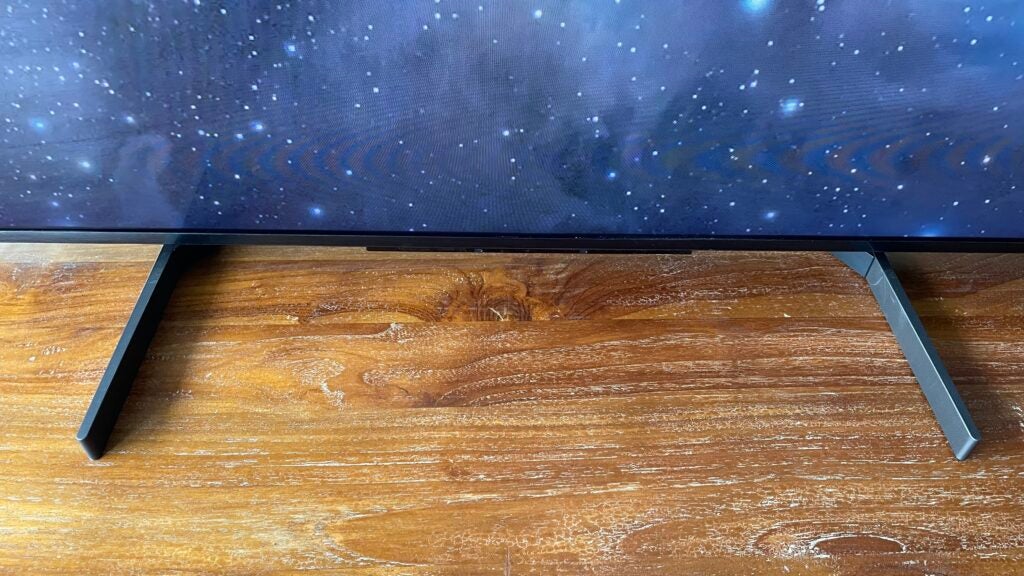
This has the effect of making the feet look like they’re protruding directly out of the screen’s frame. They can also also be rotated round in their corner mounts to raise the screen a couple of inches to accommodate a soundbar. Or if you’re looking to place the TV onto a fairly narrow bit of furniture, you can also attach the feet close together towards the centre of the screen.
The frame around the screen is extremely slender but feels ultra robust and sits flush with the level of the screen, creating a premium look that also reduces the extent to which the TV’s physical form distracting you from what you’re watching.
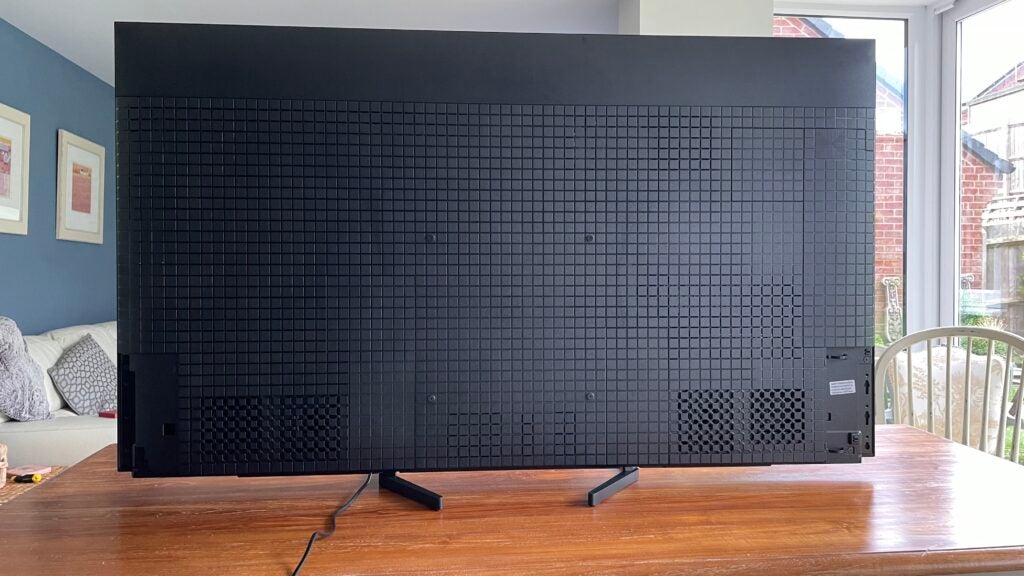
The XR65X95L’s rear consists of two sharply defined ‘layers’, with a reasonably slim (by direct LCD TV standards) outer frame and a chunkier mid-section set far enough in from the outer frame to remain invisible from all but the steepest of viewing angles. The rear panel also delivers that 360-degree TV design effect so many TVs rather mystifyingly seem obsessed with by featuring both an attractive cross hatch design etched into its places and multiple detachable covers to hide cabling mess.
The X95L ships with two remote controls: one a fairly standard button heavy, plasticky one, and another a larger, more spacious and more premium finished one. Both handsets I found pretty easy and comfortable to use.
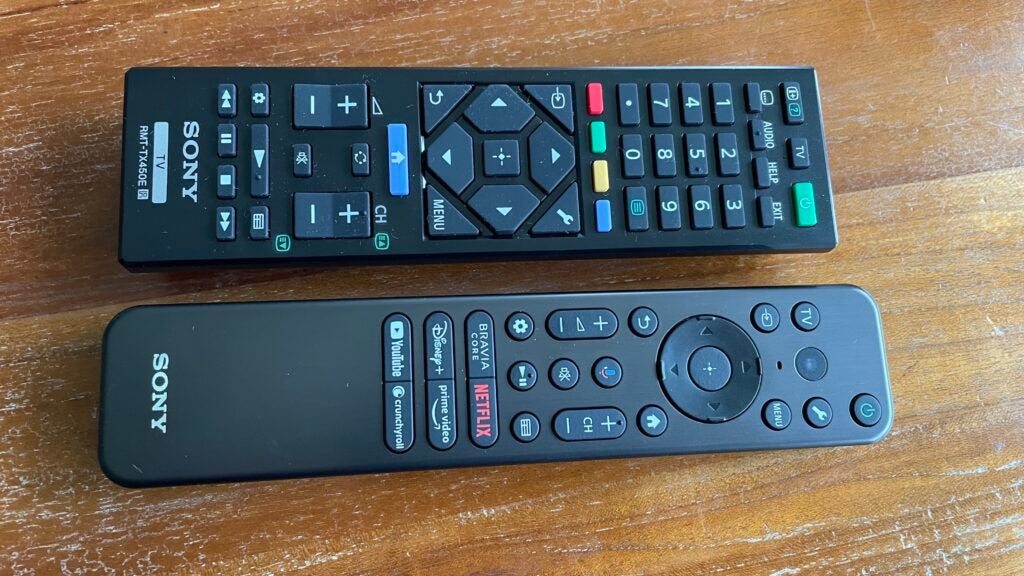
Features
- Mini LED panel design
- Acoustic Multi Audio sound System
- Sony’s Cognitive Processor XR system
The star attraction of the Sony XR-65X95L is its combination of a Mini LED lighting system and substantially improved local dimming system compared with Sony’s 2022 X95K Mini LED debutantes.
The Mini LED part of the equation involves packing the screen with much smaller LEDs than those used in regular LED TVs, creating the potential for brighter images and more precise light control. The local dimming system further enhances that light control by allowing different areas of the Mini LEDs to simultaneously output different light levels – and the big deal with the 65X95L’s dimming system is that by my count it divides the image up into an impressive 480 separate dimming zones versus 432 zones with its predecessor.
Sony claims this contributes alongside other panel and processing improvements to a claimed 30% brightness boost over Sony’s 2022 Mini LED set.
My measurements of the 65X95L’s light output (achieved in the set’s Standard picture mode) on a 10% white HDR test window achieved 1,560 nits, which dropped to 1225 nits on a 2% window. The reduction being due, presumably, to the way the local dimming works to accommodate such a relatively small test window without causing the backlight to bloom.
With a full screen white HDR window the 65X95L holds on to 611 nits in its Standard preset, which is around three times as much as a regular OLED TV can achieve in the same circumstances, and around 40-50% more than even the new QD OLED and Micro Lens Array OLED TVs can reach.
Driving the Mini LEDs and local dimming is Sony’s latest Cognitive Processor XR system. This has two main objectives in life: subtly adjusting the way images are presented so that they look more like your eyes perceive the real world, and trying to stay as true as possible to the way they were designed to look by their creators using professional mastering monitors – specifically, Sony professional mastering monitors.
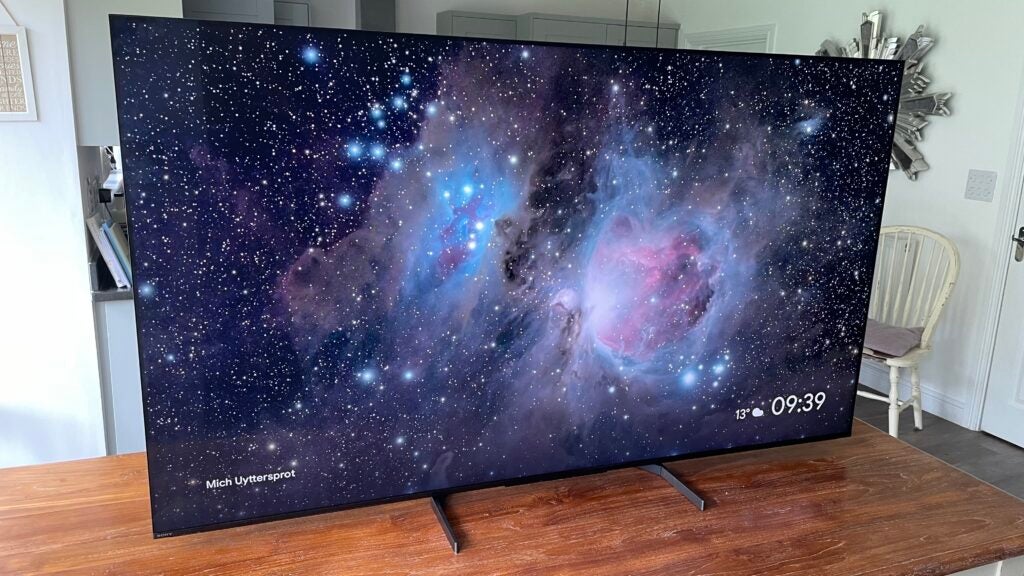
The new Cognitive Processor XR version specifically focuses on improving the effectiveness of the local dimming controls, and includes a new XR Clear Image system claimed to improve the TV’s upscaling of sub-4K sources. Sony’s usually reliable Triluminos system is on hand to handle colours, meanwhile, the X95L can upgrade SDR to HDR with some of its presets.
The 65X95L’s smart interface is provided by Google TV, while its connections comprise four HDMIs, two USBs, a composite video input, and an Acoustic Centre Sync port you can use to partner the TV’s speakers up with those in one of Sony’s current series of soundbars.
Two of the HDMIs support advanced gaming features, including 4K at 120Hz, variable refresh rates, and auto low latency mode switching. It’s a shame that while you can game in HDR10, you can only game in the Dolby Vision HDR format if you deactivate variable refresh rate support. There’s no Dolby Vision Game mode, either, so you’ll also have to put up with higher levels of input lag than with HDR10.
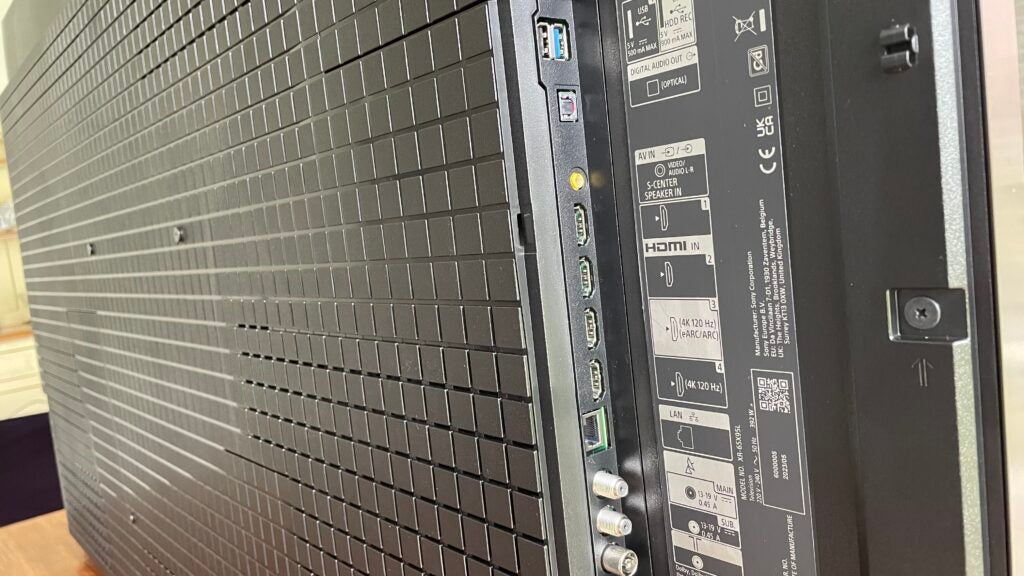
The XR-65X95L does support Auto HDR Tone Mapping with PlayStation 5 consoles, where the console can identify which Sony TV model it’s connected to and output the optimal HDR image accordingly.
The 65X95L also calls up Sony’s new dedicated game-based onscreen menu system when a game source is detected, which provides both information on the incoming gaming video signal and a few gaming aids that include a superimposed target crosshair, the option to raise the brightness of just dark parts of the picture to help you spot enemies hiding in the shadows, as well as the option to improve the fluidity of relatively low-frame rate titles at the expense of a slightly longer response time.
As I’ve come to expect from premium Sony TVs, the X95L is IMAX Enhanced certification, showing it is officially rated as being capable of doing justice to streams and 4K Blu-rays mastered using the unique, noise-reducing IMAX Enhanced methodology.
It can also access Sony’s BRAVIA Core service, which provides access to a large library of movies both old and new at uniquely high quality streaming rates of up to 80Mbps. A purchase of the 65X95L entitles you to 10 free premium BRAVIA Core releases, too.
The 65X95L’s sound is provided by the brand’s latest Acoustic Multi-Audio+ audio system, where clever processing and speaker placement – including Frame Tweeters that create their sound by vibrating the TV’s frame – make sounds appear to be coming from the correct place both on and slightly off the screen.
One final 65X95L feature of note is its compatibility with Sony’s optional BRAVIA Cam accessory. As well as unlocking video calling through the TV, the BRAVIA Cam lets the TV know where you’re sat in relation to it so that it can optimise the sound for your seating position – including adjusting the volume of dialogue to suit how far away from the screen you are.
Picture Quality
- Outstanding backlight control
- Beautifully refined contrast and colour
- Excellent upscaling and motion
It’s quickly apparent that the X95L’s pictures are a big improvement on those of its already impressive predecessor – particularly when it comes to backlight blooming. Gone almost completely are the grey halos around bright HDR objects when they appear against a dark backdrop that was so noticeable on last year’s X95Ks.
In fact, these sorts of extreme contrast picture areas look so clean now that it’s often hard to believe that they’re not being produced by a self-emissive OLED TV.
This massive reduction in blooming interference does seem to have come at the expense of a slight reduction in the brightness of small, bright objects when they appear against a black backdrop. While this runs counter to Sony’s previous apparent philosophy of never compromising brightness even if that results in blooming, the dimming is actually very mild – certainly less aggressive than it tends to be on Samsung’s Mini LED TVs – and as such is unlikely to be a distraction unless you really go looking for it.
Couple this with some of the deepest black levels I’ve seen from an LCD TV, and the gentle dimming of small bright high-contrast highlights feels like an almost wholly positive development given the drastic effect it has – along with the increased dimming zone numbers – on reducing potentially more distracting blooming issues.
It’s not just the removal of blooming (as you’re not watching the screen from a steep angle) that impresses about the 65X95L’s backlight management system. There’s also a generally more refined feel to the screen’s use of light, resulting in more consistent and effective shadow detail reproduction, more finesse in the screen’s colour shading and blending, and a generally even more refined and naturalistic sense of depth and three-dimensionality that sees the Cognitive Processor XR getting closer than ever to its ‘as your eyes see the world’ picture goal.
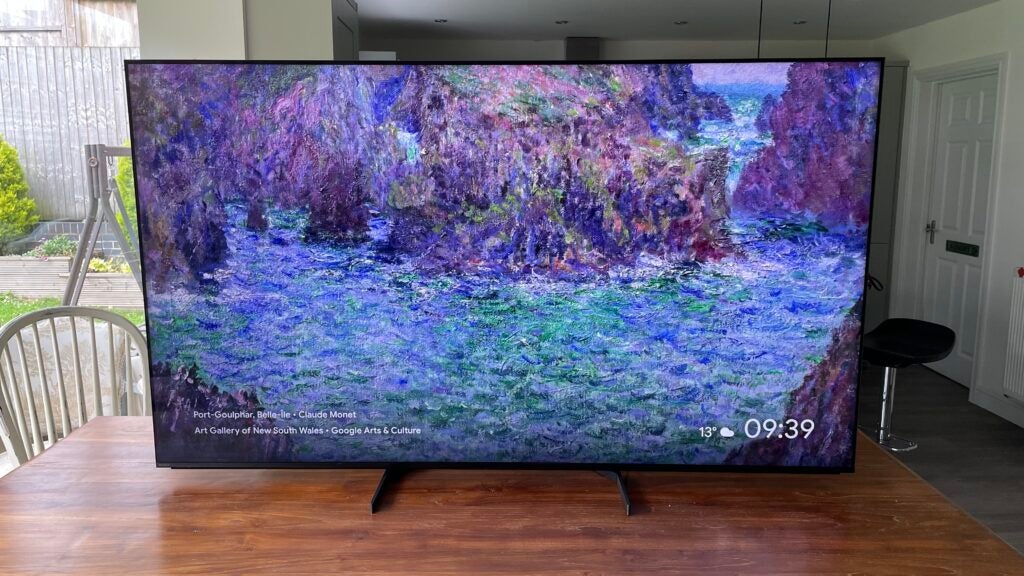
This big leap in overall light and colour finesse also helps the 65X95L deliver pictures that appear to track even more closely the reference grade images of Sony’s professional mastering monitors – especially when you’re using the TV’s Cinema and Custom presets.
Again, even the best OLED TVs will struggle to match the colour and gamma accuracy the 65X95L is capable of. Particularly since the Mini LED light engine supports a more consistent overall brightness level, where brightness doesn’t drop back as much with full-screen bright HDR images as it does with OLED screens.
The 65X95L’s extra light and colour accuracy and general subtlety contributes to a lovely sense of detail in its pictures too. This is especially apparent with the ultra-clean and minimally compressed 4K images you get from 4K Blu-rays, but Sony’s latest processing system also does a brilliant job of polishing away any rough edges or compression issues you might get with streamed video.
Its upscaling of HD sources is exemplary, too, adding exceptional refinement and density to HD images without exaggerating any noise they might contain.
The clarity holds up beautifully during camera pans and fast-moving action scenes too, thanks to Sony’s always reliable motion processing options. In fact, the 65X95L’s ability to reduce judder without causing either the over-fluid soap opera effect or unwanted processing artefacts is even slightly better than it was with Sony’s 2022 TVs.
The 65X95L’s picture talents transfer effortlessly to gaming, too. I had the a seriously fun time with our PS5, in particular, thanks to the extra refinement and more effective HDR performance enabled by the TV’s special PS5 functionality – though its game images felt responsive and looked clean, vibrant and sharp with a PC and Xbox Series X too. Using the Xbox did make me wish that Sony’s TV offered less compromised Dolby Vision gaming support.
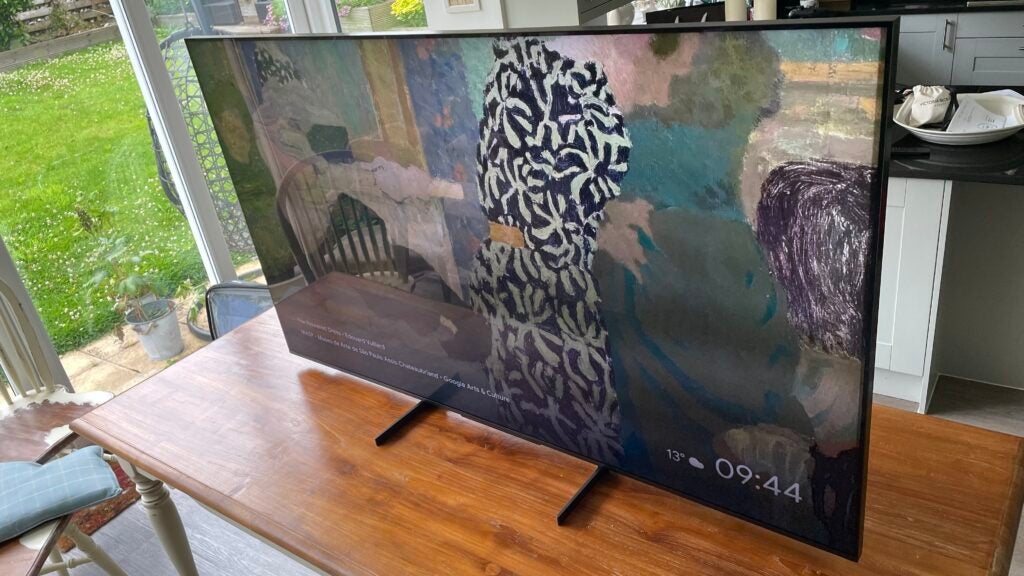
Looking really hard for issues with the 65X95L’s pictures uncovers a few minor ones. The Vivid picture preset dramatically ditches the focus on balance, naturalism, and accuracy found across all other presets in favour of an over-cooked, cartoonish image that it’s hard to imagine any Sony or AV fans liking for more than a few minutes. Of course, you can avoid the Vivid preset’s issues simply by choosing not to use it.
In some presets very bright HDR highlights can look just a little bleached of subtle shading detail, and just occasionally a scene with a particularly complicated combination of bright and dark elements can lead the TV’s usually excellent contrast performance to flatten a little, leaving dark areas looking slightly misty.
Finally, while the 65X95L is bright by the standards of most TVs, it is not as spectacularly punchy as the Samsung QE65QN95C and TCL’s 65C845K. However, the refinement the 65X95L’s processing, backlight control and colour management manages to get out of its brightness delivers a more consistently natural, nuanced and immersive image than either of those two rivals.
If you value precision and immersive balance over the Samsung’s drama or the TCL’s value, the 65X95L is the Mini LED TV for you.
Sound Quality
- Excellent detail from the Acoustic Multi-Audio speaker system
- Large sound stage
- Clean, controlled bass
As usual with a Sony Acoustic Multi-Audio TV, the best thing about the XR-65X95L’s sound is how precisely it places sound effects. If someone’s talking from the upper right side of the picture, their words seem to be coming from the upper right side of the picture. If a speed boat crosses or circles around the screen, its engine noise circles around the screen too.
Impressively, this placement effect can be sustained for multiple objects in any given sequence, and is also able to pick up and work its magic on even the most subtle sounds. Not even the smallest element of a mixer’s art goes unheard.
At the same time, though, subtle mix elements don’t sound too bold or bright; on the contrary, the 65X95L’s sound is immaculately balanced and refined.
There’s enough raw power at the 65X95L’s disposal, too, to project it nicely beyond the confines of the TV’s bodywork, while the frame tweeters come in particularly handy when it comes to delivering a decent sense of extra space – including a hint of verticality – with Dolby Atmos soundtracks.
In a perfect world the sound would have a bit more forward projection and impact, and there’d be more bass to underpin the action. Though by sticking well within the speakers’ low frequency limitations, heavy bass sounds do at least avoid causing distracting crackling or buzzing distortions.
Latest deals
Should you buy it?
Gorgeous picture quality
Sony’s improved backlight controls join forces with beautifully subtle colours to deliver some of the most refined and natural images in the TV world.
There are cheaper Mini LED models around
TCL’s 65C845K offers advanced Mini LED lighting and even more brightness for less than half the price of the 65X95L. But its pictures aren’t as subtle, precise or natural.
Final Thoughts
As with Sony’s OLED TVs, while the 65X95L might not be as showy or aggressive as the best of its Mini LED rivals, the deftness and balance it brings to its pictures – including largely avoiding the backlight blooming that was the only major issue with its predecessor – helps it produce arguably 2023’s most accurate, refined, balanced and flat out beautiful LCD TV pictures.
How we test
We test every television we review thoroughly over an extended period of time. We use industry standard tests to compare features properly. We’ll always tell you what we find. We never, ever, accept money to review a product.
Find out more about how we test in our ethics policy.
Tested for more than a week
Tested with real world use
Benchmarked with tests
FAQs
A system where screens use much smaller LEDs, so more of them can be fit into the same place to accommodate more brightness and light control.
Full bandwidth (40-48gbps) HDMI ports can handle 4K at 120Hz, variable refresh rates, and automatic low latency mode switching. Though just because a port is describes as HDMI 2.1 doesn’t automatically mean it can handle all those features. You need to check it has sufficient bandwidth.
A process where the LED backlights are divided into separately controllable zones, so different light levels can be output from different parts of the screen at any given moment to enhance image contrast.







